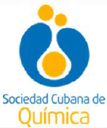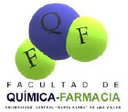
7th International Chemistry Symposium
SIQ 2019
Laccases are natural lignine processing peroxidases which are used as promising biocatalysts in bioremediation processes at industrial scale. These enzymes are also used in the development of biosensors for clinical and environmental analysis of oxygen, azides, morphine, codeine, catecholamines or flavonoids of high interest in biotechnology and biomedicine. New materials that allow the reuse and recovery of laccases are required to increase the efficiency of the enzymatic degradation in bioremediation and biosensing[3]. The covalent immobilization of laccase from Trametes Versicolor (Lac) on magnetic iron oxide nanoparticles (IONP) is presented. The obtained systems were characterized by TEM, DLS, TGA, EDS, VSM, XRD, FT-IR, AAS and UV-Vis. IONP were synthesized by a thermal decomposition method in presence of trioctylphosphine oxide and oleic acid (IONP-CH3; 13,1(±0,9) nm). A ligand exchange procedure was performed directly in water in presence of polyacrylic and gallic acids (IONP-GA/COOH; dH=70(±20) nm) in a novel one-step procedure and IONP-GA/COOH showed improved colloidal stability. Lac was immobilized on IONP-GA/COOH (IONP-GA/CO-Lac; dH=100(±30) nm) via a carbodiimide covalent coupling. The assays of enzymatic activity (EA) were carried out following the oxidation of ABTS (λ=420 nm). The EA of IONP-GA/CO-Lac was 4,4 higher compared to the activity of the native enzyme in solution and showed an increased thermoresistance up to 60 ºC. IONP-GA/CO-Lac retained a 66% of the initial EA after 6 months of storage. The decolorization and detoxification potential of IONP-GA/CO-Lac again azo dyes and catechins were also evaluated and the EA was determined in the presence of inhibitors of Lac. The increase of the enzymatic efficiency of immobilized Lac and the possibility to reuse the enzyme, proved during 10 consecutive cycles, raises the expectations for the subsequent applications of IONP-GA/CO-Lac in the enzymatic bioremediation of waste products and the treatment of biotechnological compounds with a positive impact in biomedicine.
Laccases are natural lignine processing peroxidases which are used as promising biocatalysts in bioremediation processes at industrial scale. These enzymes are also used in the development of biosensors for clinical and environmental analysis of oxygen, azides, morphine, codeine, catecholamines or flavonoids of high interest in biotechnology and biomedicine. New materials that allow the reuse and recovery of laccases are required to increase the efficiency of the enzymatic degradation in bioremediation and biosensing[3]. The covalent immobilization of laccase from Trametes Versicolor (Lac) on magnetic iron oxide nanoparticles (IONP) is presented. The obtained systems were characterized by TEM, DLS, TGA, EDS, VSM, XRD, FT-IR, AAS and UV-Vis. IONP were synthesized by a thermal decomposition method in presence of trioctylphosphine oxide and oleic acid (IONP-CH3; 13,1(±0,9) nm). A ligand exchange procedure was performed directly in water in presence of polyacrylic and gallic acids (IONP-GA/COOH; dH=70(±20) nm) in a novel one-step procedure and IONP-GA/COOH showed improved colloidal stability. Lac was immobilized on IONP-GA/COOH (IONP-GA/CO-Lac; dH=100(±30) nm) via a carbodiimide covalent coupling. The assays of enzymatic activity (EA) were carried out following the oxidation of ABTS (λ=420 nm). The EA of IONP-GA/CO-Lac was 4,4 higher compared to the activity of the native enzyme in solution and showed an increased thermoresistance up to 60 ºC. IONP-GA/CO-Lac retained a 66% of the initial EA after 6 months of storage. The decolorization and detoxification potential of IONP-GA/CO-Lac again azo dyes and catechins were also evaluated and the EA was determined in the presence of inhibitors of Lac. The increase of the enzymatic efficiency of immobilized Lac and the possibility to reuse the enzyme, proved during 10 consecutive cycles, raises the expectations for the subsequent applications of IONP-GA/CO-Lac in the enzymatic bioremediation of waste products and the treatment of biotechnological compounds with a positive impact in biomedicine.
About The Speaker

MsC. Claudia Iriarte Mesa






